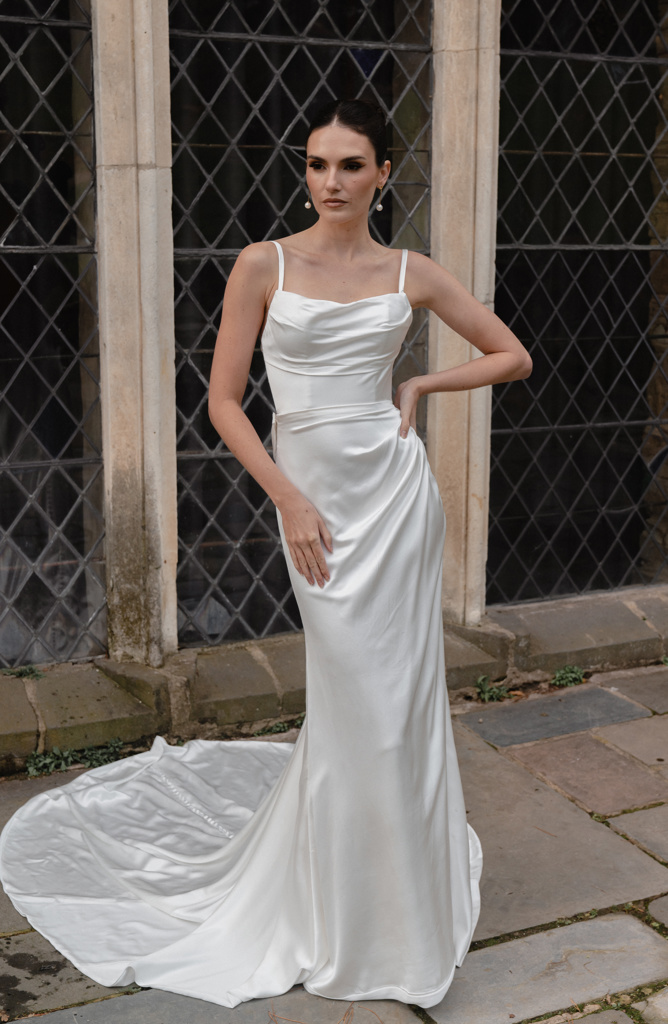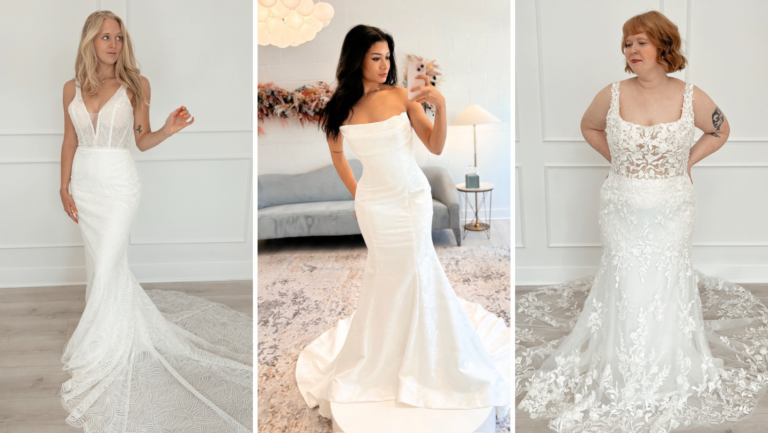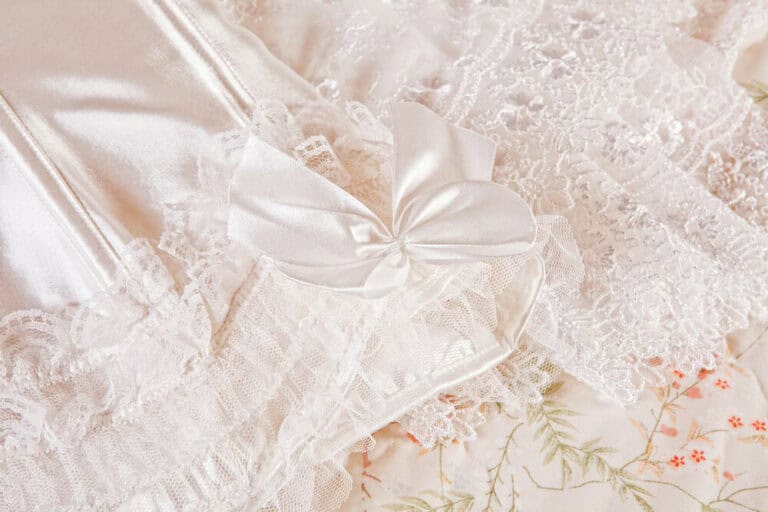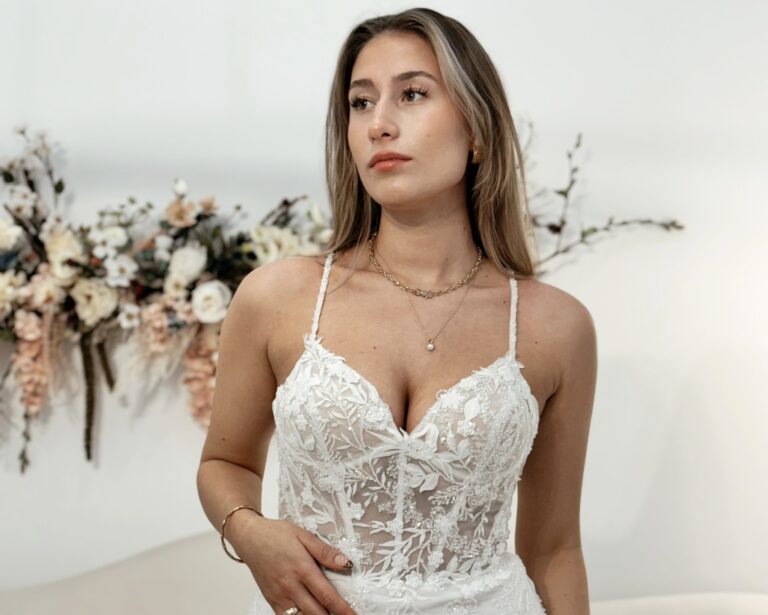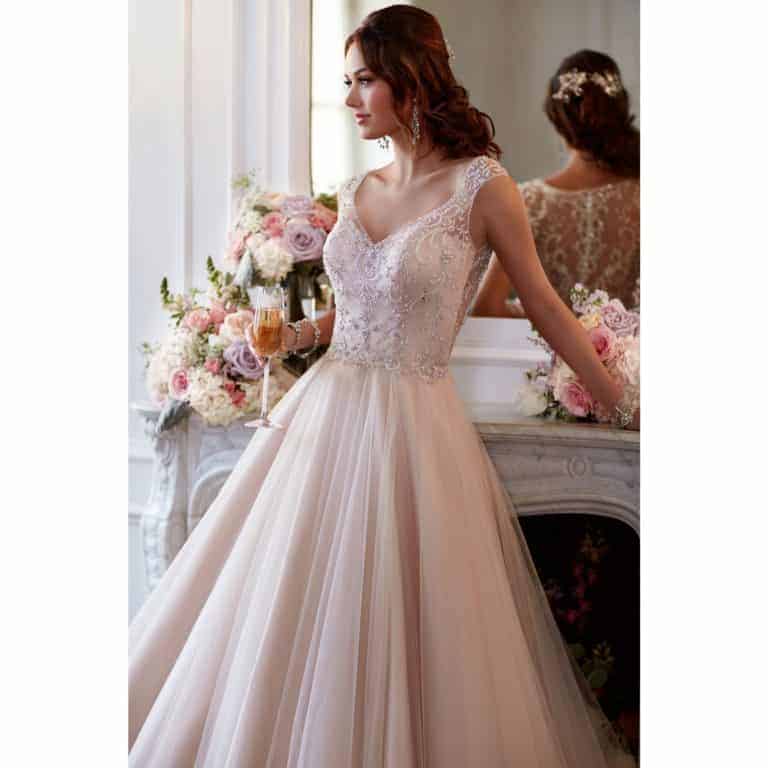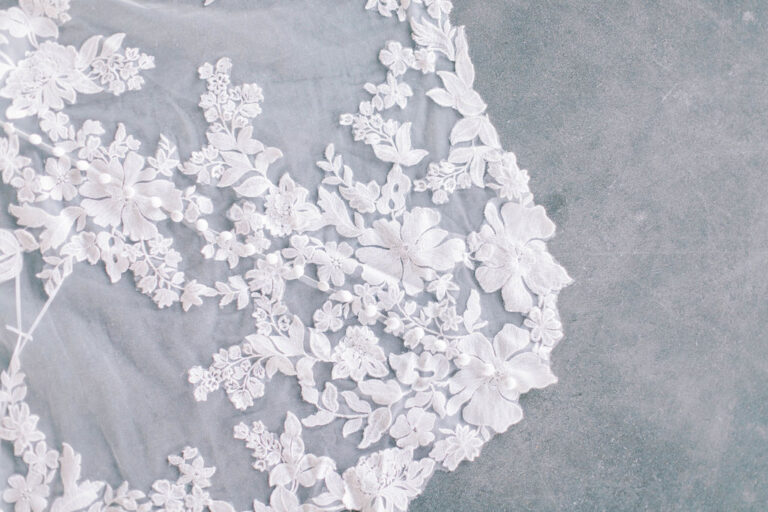Everything You Need to Know About Wedding Dress Bustles
Did you know that you are probably going to need to have a bustle added to your wedding dress before the big day arrives? As part of the alterations process, a seamstress can add in a bustle, of which there are many different kinds, to help you move around your reception space. But what is a bustle, and why do you need one?
What Is a Wedding Dress Bustle?
A bustle helps full the train of a wedding dress up off the floor to prevent any damage to the fabric. Bustles can prevent people from tripping over a wedding gown, and they prevent stains, tears, and other damage that could permanently alter the appearance of your beautiful wedding dress. Additionally, bustles make it much easier for brides to move around and dance.
Bustles are a network of hooks or loops and ties that help secure the train into the back of the dress, either leaving part of the train exposed or completely hiding it in the rest of the gown. Unless a dress doesn’t touch the floor, it should probably have a bustle sewn in.
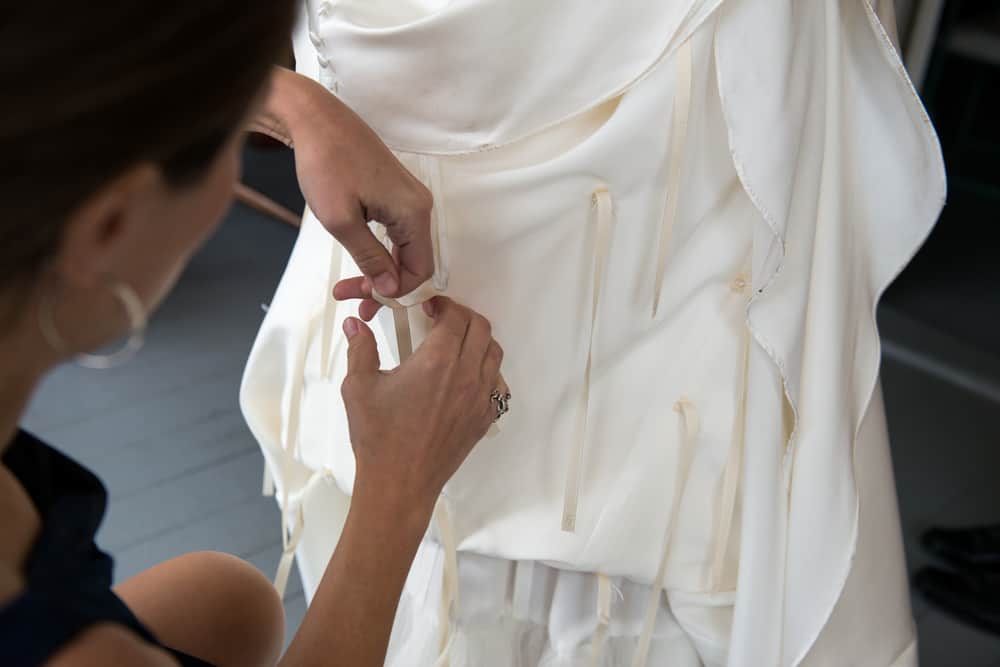
Types of Wedding Dress Bustles
- American bustles, aka over-bustles, are created by attaching several hooks in the waistline of the gown. This allows the train to pulled up and hooked over the top of the dress. You can have one, three, or five bustle hooks attached to your gown. We recommend this style of bustle for robust ball gowns.
- Austrian bustles are gaining popularity because they create a unique shape with the fabric of the dress. To create this look, seamstresses gather the fabric of the gown centrally in the middle of the back. This type of bustle creates a ruching effect. We love this bustle style because it is easy to attain on the day of the wedding. We recommend this bustle to brides with incredibly intricate beading, lace, or appliqués on their dress.
- French bustles, aka Victorian or under bustles, leave brides with more of a natural waistline. Think of French bustles as the opposite of American bustles. Instead of hooking over the top of the dress, French bustles allow the train to be tucked under the top layer of fabric. Ribbons or hooks can be used to secure the fabric in place. Your seamstress can add multiple hooks or ties to achieve your desired look. We like French bustles for A-line or mermaid style gowns.
- Ballroom bustles can quickly make a train vanish. If you want your dress to look like it hasn’t been bustled at all, this is an excellent option for you. To create a ballroom bustle, your seamstress will attach multiple bustle points around the bodice of the gown, and you (or a member of the bridal party) will fold the fabric delicately into itself. Ballroom bustles tend to be the most expensive type of bustle. We recommend this look for brides who don’t want the bustled look and have a ball gown.
- Train-flip bustles also give the illusion that there is no bustle. With a train-flip bustle, the train is flipped under the dress and pinned to itself. This makes the dress appear fuller and floor-length. We recommend this bustle for brides with ball gowns.
- A train loop is another option for brides who want to have the bottom of their dress pull up to the wrist as they twirl around the dance floor. This keeps your hands free while still giving you the dramatic effect of the dress fanning out as you dance. No bustling is required with the train loop.
How to Bustle a Wedding Dress
Each type of bustle will require a different method for bustling the gown. Brides need to bring someone to their fitting appointments to learn how to bustle the dress because it isn’t something that a bride can do herself. Your seamstress should have no problem teaching your trusted “bustler” how to fix up your gown before the reception.
At Savvy Bridal Boutique, our bridal consultants can help you determine the best bustle option for your gown. Make an appointment today to find the dress of your dreams.

